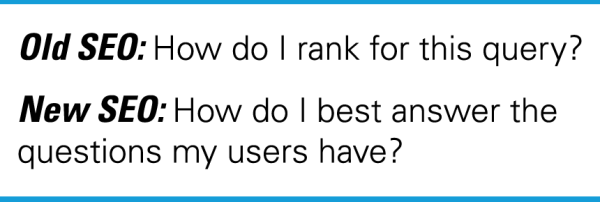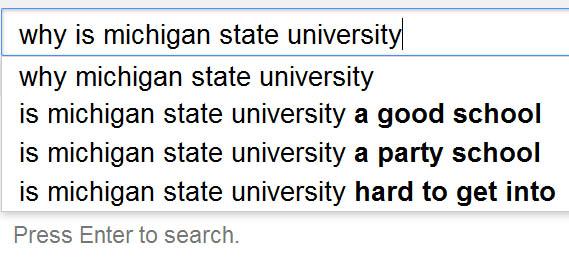
Google has been coming up with updates much too often over the past few years but it was the recent ‘Hummingbird update’ which perhaps brought about some of the biggest changes in how the search engine giant processes user queries to generate ‘relevant results.’

While Keyword Research ruled the SEO arena for over a decade, it’s Market Research which is now taking center stage. Google, according to many top notch search engine marketing experts, cares a great deal about whether pages on your website ‘answer’ a specific user query or not.

While Google cannot of course read & understand every paragraph, photograph or infographic published on a web page, it sure can use the information and feed everything to an algorithm to determine if a particular question is being answered or not.
The Solution – Incorporate More Questions in Your Content!
Begin by brainstorming a set of questions that people in your industry ask on a daily basis.

If, for example, your company sells honeymoon holiday packages, here’s a set of questions your content (spread over blogs, articles published on third party article directories and guest post websites) should ideally try to answer to GET FOUND by internet users:
- How to choose a honeymoon package
- How to plan a honeymoon trip
- What not to do on a honeymoon trip
- What are the best romantic honeymoon destinations
- How to make a Honeymoon trip memorable
- How to plan a budget honeymoon trip
- What are the gifts I can buy for him during honeymoon?
- How to make honeymoon more exciting?
There are hundreds of such questions. You need not necessarily focus on each one of them but it’s absolutely important to devise a content strategy which facilitates organic inclusion of different types of questions in content.
How to Incorporate More Questions in Content
To Update Old Content or Not:
You need NOT go back and have all your web pages updated with some ‘questions’ unless it’s of very poor quality. If the content is doing well already, do NOT play with it. If you know it’s spin-content or was written poorly, replace it with new content that answers at least 1 question per page really well!

How Many Questions?
Do not stuff questions in your content. Also, avoid following a fixed rule like ‘one question per page’ or ‘one question per paragraph.’ Search engine algorithms can detect ‘trends’ very quickly and therefore, it’s very important to do it as naturally as possible.

Is Context is More Important than Ever in SEO?
Instead of having content that revolves around certain keywords (short or long tail), SEO experts now recommend creation of contextual content.
When it comes to the goal of incorporating questions, you need to follow this very rule.
For a honeymoon package selling website, for example, contextual content (which answers one or more questions) can be around romantic getaways, travel safety, shopping, wellness, travel insurance and other such topics.
Conversational Content:
one of the best ways to accommodate questions (in a natural way) is to create conversational content.
Consider these two questions:
- How to buy a DSLR camera
- Where to buy a good DSLR camera in New York
If a user enters these two queries, the second one is considered ‘in context’ of the 1st query.
Content which answers a series of such questions (actually answers them and not just lists them out, okay?) which have the same context, is likely to do well on Search Engine Results page now.
Google is even relating queries like:
- What is the latest Apple iPhone advertisement
- Where to buy it
For the second question, Google may automatically connect the 1st question and produce results specific to ‘Apple iPhone.’
Final Words
While you direct your content manager to contextually incorporate questions in your content, make sure you do not underestimate other SEO best practices.
Hummingbird update has forced us all to have content that specifically answer questions every now and then for users on the internet but it doesn’t mean you overdo it.

